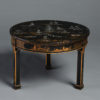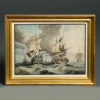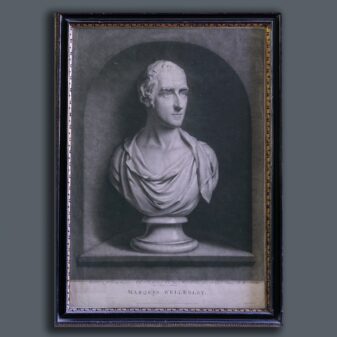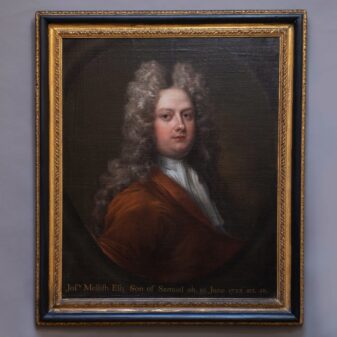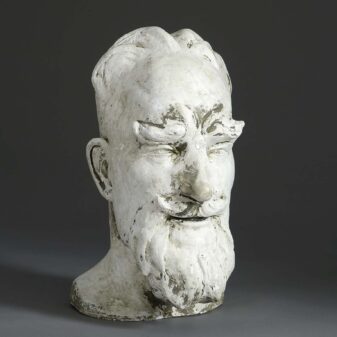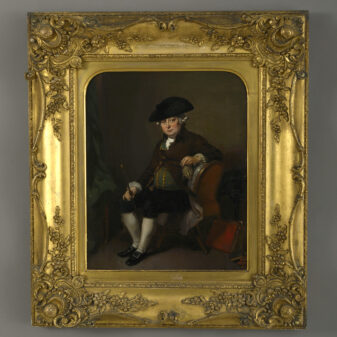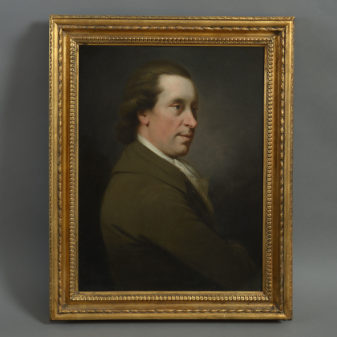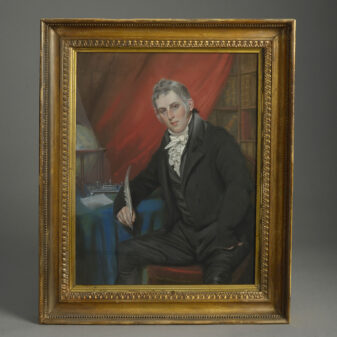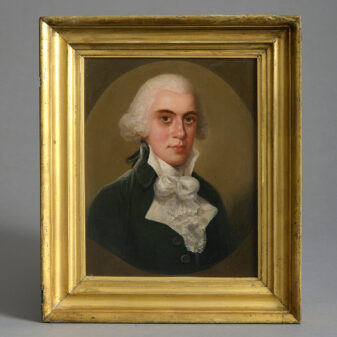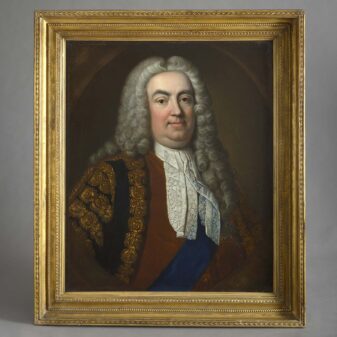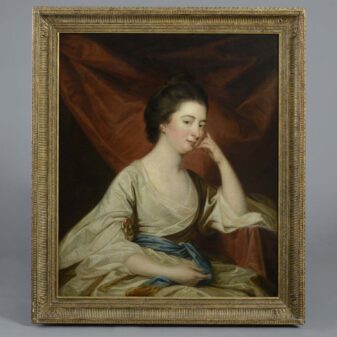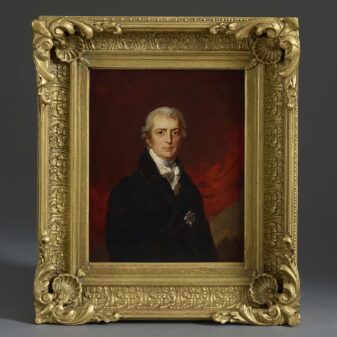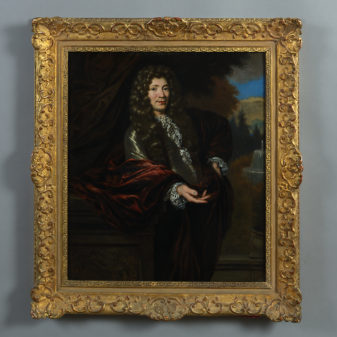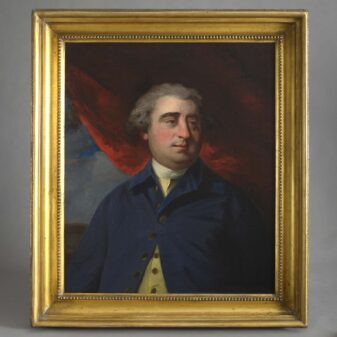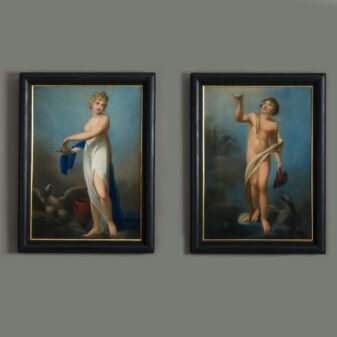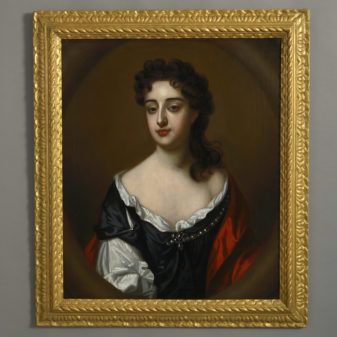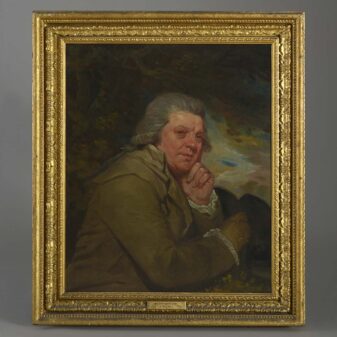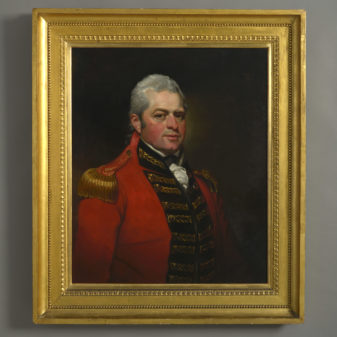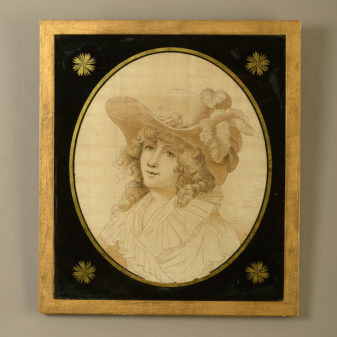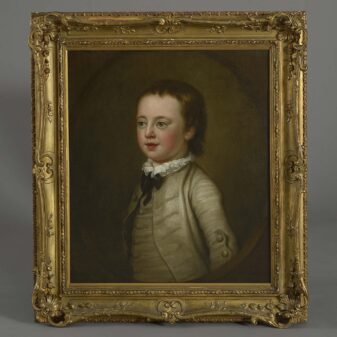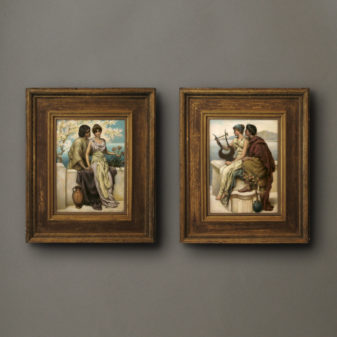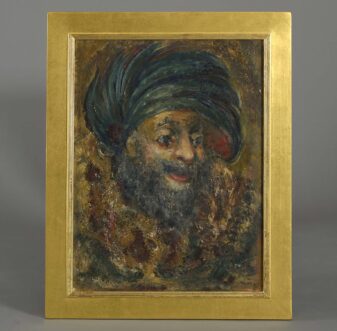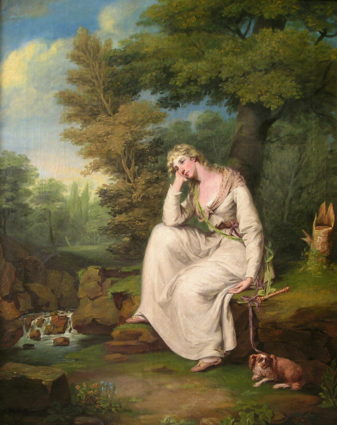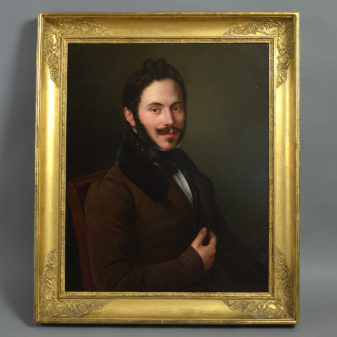Nathaniel Dance (1735-1811) Portrait of Sir Robert Murray Keith (1730-1795)
£12,500
SOLD
Oil on canvas in a giltwood frame. Dimensions refer to framed size
Provenance: Possibly by descent in the Seymour family; sold by Commander Evelyn Culme-Seymour RN (1881-1970) at Christie’s, London, 28 May 1948, lot 117; bought by antique dealers Mallett, and later purchased by Dr T. A. Heinrich, Director of Royal Ontario Museum, Canada; sold Christies, New York Old Master Paintings, 26th March 1982, lot 103 where purchased by Sir Harold Mitchell (1900-1983) and by descent until 2013
Literature: Dr Daniel Goodreau, ‘Nathaniel Dance R.A.’, 1973
(unpublished PhD thesis) p. 305
This newly discovered portrait is one of six known versions that Dance undertook of Sir Robert Murray Keith. Completed either for officials, friends or family, Dance was known to finish multiple portraits of the same sitter in this manner; in 1760-61 he painted four versions of the conversation piece showing Sir James Grant with three colleagues (a version on loan Tate Britain, London) and undertook various versions of his royal portraits. Stylistically it appears to have been completed in the early 1770s and given Keith is depicted in the regimental uniform of the 87th Highlanders wearing the sash of the Order of the Bath, an award he only received in February 1772, it clearly dates to around this time. Also this version exhibits a certain gravitas and freshness of approach which compares most closely in execution to the portrait in the government art collection at the British Embassy in Copenhagen, and therefore suggests an early version in comparison to some of the others which are less realistic and confidently rendered. Confusion over authorship has also led to greater obscurity of this particular version, as when it first appeared on the art market in 1948 it was believed to be by Lemuel Francis Abbott, a miss-attribution that persisted until recently.
The portrait possibly belonged to Field Marshal Henry Seymour Conway (1721-1795), a close friend of Keith who owed his first preferment to him in Germany as his Secretary in December 1758 and again later when he helped secure him his appointment at the Court of Saxony. They were also together in Hungary in 1774 when Keith learnt of his father’s death. It is this close association that maybe led to the portrait originally being in the Seymour family. The other known versions attributed to Dance are in the collections of The Duke of Northumberland, Alnwick Castle; The Earl of Cranford & Balcarres c.1959; Dick-Cunningham family, Edinburgh c.1962; The Government Art Collection: British Embassy Copenhagen, Denmark, acquired 1937 and the Foreign Office, acquired 1995.
Sir Robert Murray Keith, Lieutenant-General and diplomat was the eldest son of Robert Keith ambassador to Vienna and St.Petersburg. After an initial military career in 1769 he was appointed British Minister at the Court of Saxony. Able, industrious, and an excellent linguist, Keith proved a popular and competent ambassador being transferred as Envoy Extraordinary to Denmark in June 1771. During the revolution of 1772, his bold action in demanding, under threat of war, the release of Queen Caroline Matilda, earned the gratitude of her brother, George III, and was rewarded with the Order of the Bath and the appointment to Vienna. Keith now felt he had attained his life’s ambition, his only complaint being the financial strain of providing hospitality for the scores of `young John Bulls’ on the Grand Tour. At the suggestion of colleagues he was returned to parliament as member for Peebles and although absent due to his diplomatic work, remained the representative until 1780. In September 1777 he was promoted Major-General and in 1781 he became a Lieutenant-General. His diplomatic service ended with the peace between Austria, Russia, and Turkey on the eve of the French revolutionary war.
Nathaniel Dance was one of the most sophisticated portrait painters of the second half of the eighteenth century, bringing a neoclassical sensibility to the genre derived from more than a decade living in Rome (1754-65). In 1762 he worked in the studio of Pompeo Batoni, and it was probably while under Batoni’s influence that Dance developed the use of colour and chiaroscuro which he was to put to such great effect in his subsequent portraits. After returning to London, Dance built up a fashionable and successful portrait practice, painting George III and Queen Charlotte in 1759. He was a founder member of the Royal Academy and developed an equally important career as a history painter, the genre which ranked highest in the artistic hierarchy of the eighteenth century. At some point in the 1770s he became financially independent due to an inheritance, and about ten years later an astute marriage to a rich heiress meant that he became very wealthy indeed. He finally ceased painting professionally on his election to Parliament in 1790, when he also resigned his membership of the Royal Academy, of which he had been a founder member. In July 1800 he added by royal license to his own name that of Holland, after his wife’s distant cousin Charlotte Holland and four months later he was created a baronet. In a curious reflection of the relatively low social status of artists in the early nineteenth century, Dance took care to disassociate himself with his artistic past, destroying many of his works, and exhibiting only the occasional landscape at the Royal Academy (in all cases, as `a gentleman’). Dance saw his great talent as a mere trade, and thus the work of Britain’s first neo-classical artist has become less well known than it otherwise should be.

